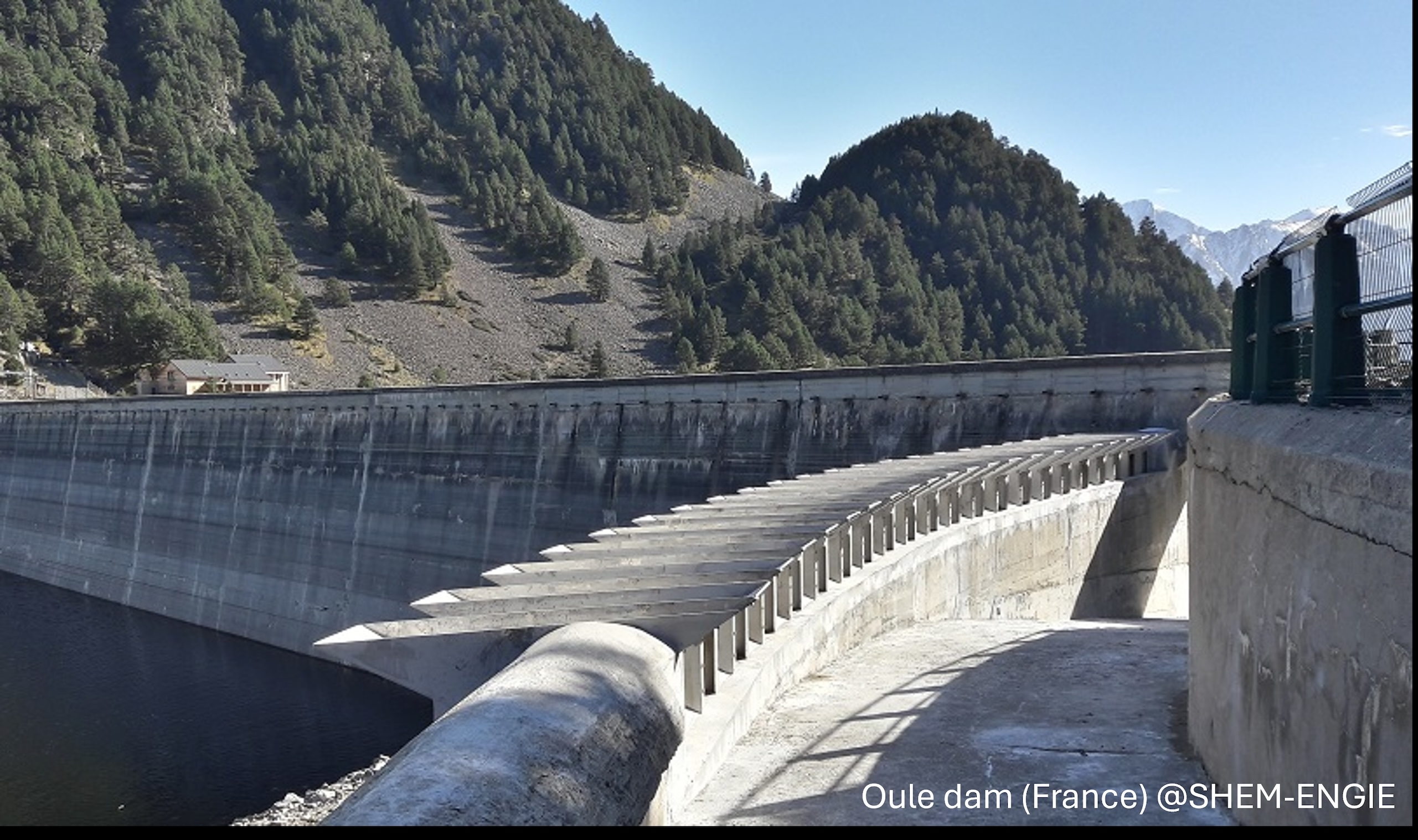Location
Atlanta, GA
Presentation Type
Presentation
Start Date
10-7-2025 2:05 PM
Description
As an effective flood control structure, the piano key weir (PKW) typically features a rectangular planform for its overhangs. However, this design offers room for improvement. To enhance hydraulic efficiency, two modified PKW layouts are proposed. In the first, the floor of each key is lowered with a semicircular cross-section, forming an elliptical planform and crest. In the second, the floor is lowered with an isosceles triangular prism, creating an equilateral triangular overhang. Both modified PKW models, manufactured by 3D printing, were tested in a large-scale experimental setup. Compared to the reference weir, the elliptical-overhang PKW increases the developed crest length by ~36% and enhances discharge by 30–53% across the tested flow range. The triangular-overhang PKW extends the crest length by ~23%, resulting in a 16–20% increase in discharge. The modified inlet key crest, whether elliptical or triangular, extends further downstream, promoting jet break-up, air entrainment at low to medium-high flows, and improved energy dissipation. The elliptical or triangular overhang facade, combined with a lowered inlet key floor, reduces entrance energy loss, improving inflow conditions. The lowered floor also accommodates additional water volume, enhancing flow motion toward the crest. For the outlet key, the lower floor facilitates outflow and mitigates local submergence at high floods. These modifications offer more effective PKW designs, which is particularly beneficial when reservoir water level increases must be controlled during floods or when spillway construction space is limited—contributing to improved dam safety and cost efficiency.
Included in
Enhancing the Hydraulic Efficiency of Piano Key Weir (PKW) — Some Research Achievements
Atlanta, GA
As an effective flood control structure, the piano key weir (PKW) typically features a rectangular planform for its overhangs. However, this design offers room for improvement. To enhance hydraulic efficiency, two modified PKW layouts are proposed. In the first, the floor of each key is lowered with a semicircular cross-section, forming an elliptical planform and crest. In the second, the floor is lowered with an isosceles triangular prism, creating an equilateral triangular overhang. Both modified PKW models, manufactured by 3D printing, were tested in a large-scale experimental setup. Compared to the reference weir, the elliptical-overhang PKW increases the developed crest length by ~36% and enhances discharge by 30–53% across the tested flow range. The triangular-overhang PKW extends the crest length by ~23%, resulting in a 16–20% increase in discharge. The modified inlet key crest, whether elliptical or triangular, extends further downstream, promoting jet break-up, air entrainment at low to medium-high flows, and improved energy dissipation. The elliptical or triangular overhang facade, combined with a lowered inlet key floor, reduces entrance energy loss, improving inflow conditions. The lowered floor also accommodates additional water volume, enhancing flow motion toward the crest. For the outlet key, the lower floor facilitates outflow and mitigates local submergence at high floods. These modifications offer more effective PKW designs, which is particularly beneficial when reservoir water level increases must be controlled during floods or when spillway construction space is limited—contributing to improved dam safety and cost efficiency.


